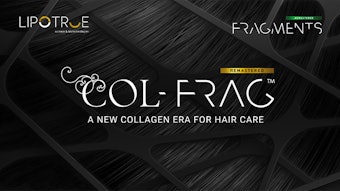Gattefosse has boosted oxygen consumption in cells and cellular renewal with its hydrolyzed soy protein, reducing the aging effects of urban pollutants and the environment on skin. According to the company, environmental factors can decrease the metabolism in skin cells, in turn reducing the rate of cell regeneration. Phyladerm Vegetal C2 (INCI: Hydrolyzed soy protein) is aimed at this cutaneous metabolism. Its effects have been shown to boost cellular respiration and rebalance the activity of fibroblasts in the short term while stimulating cellular renewal in the longer term.
Derived from non-GMO soy, the material is ECOCERT-approved for use in cosmetic formulations. The ingredient is derived by hydrolysis of soy proteins and is a fraction balanced in peptides. Soybeans are reputed for providing a highly consistent source of proteins and these proteins are present in the material to revitalize cutaneous metabolism.
Amino acids—including threonine, valine, methionine, isoleucine, leucine, lysine, phenylalanine and tryptophane—also are present in the product and effective in the synthesis the proteins collagen, elastin and keratin. Mineral salts of potassium, sodium and calcium are incorporated as well to serve as catalysts in biological reactions. They also play a role in maintaining epidermal surface moisture by fixing water.
The ingredient is recommended not only for skin care to revitalize weakened skin, but also for hair care. The company reports that delivering amino acids to the hair roots potentially stimulates cellular synthesis to strengthen hair at the base and improve its resistance.
For the formulator's consideration, the material can be incorporated at the end of a formula at room temperature in many different applications: emulsions, microemulsions, shampoos, gels and lotions with an alcohol content less than 25%.
For more information, visit www.gattefosse.com.










